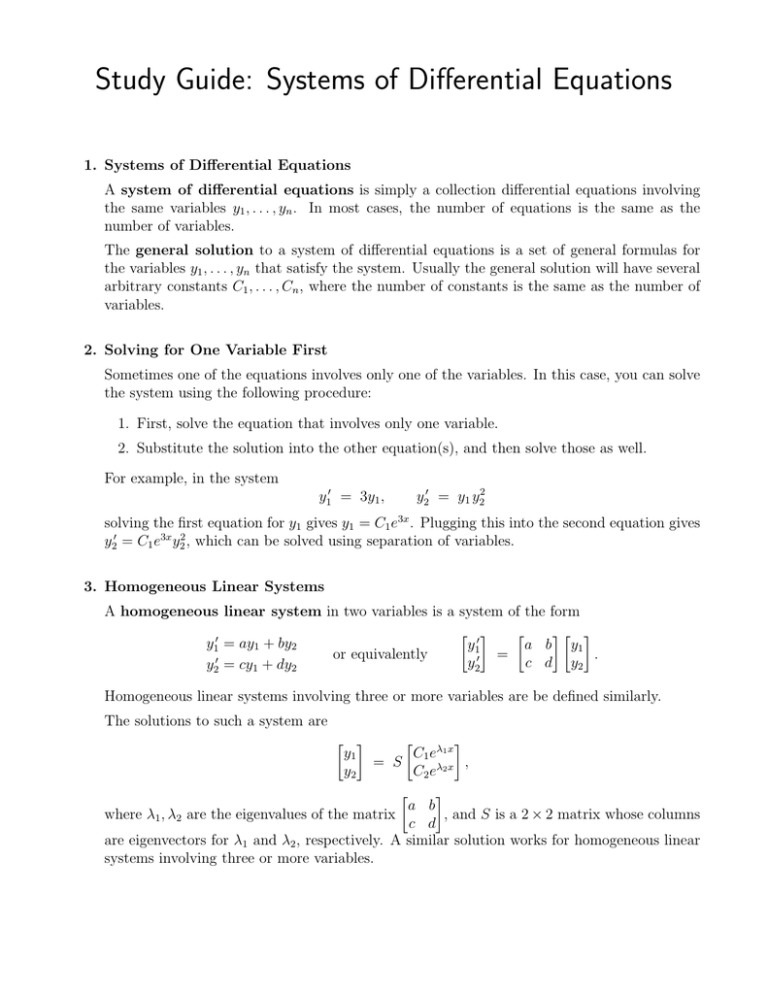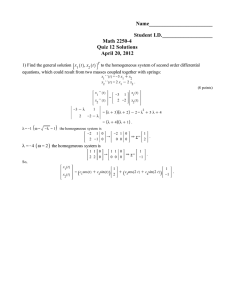Study Guide: Systems of Differential Equations
advertisement

Study Guide: Systems of Differential Equations 1. Systems of Differential Equations A system of differential equations is simply a collection differential equations involving the same variables y1 , . . . , yn . In most cases, the number of equations is the same as the number of variables. The general solution to a system of differential equations is a set of general formulas for the variables y1 , . . . , yn that satisfy the system. Usually the general solution will have several arbitrary constants C1 , . . . , Cn , where the number of constants is the same as the number of variables. 2. Solving for One Variable First Sometimes one of the equations involves only one of the variables. In this case, you can solve the system using the following procedure: 1. First, solve the equation that involves only one variable. 2. Substitute the solution into the other equation(s), and then solve those as well. For example, in the system y10 = 3y1 , y20 = y1 y22 solving the first equation for y1 gives y1 = C1 e3x . Plugging this into the second equation gives y20 = C1 e3x y22 , which can be solved using separation of variables. 3. Homogeneous Linear Systems A homogeneous linear system in two variables is a system of the form 0 y10 = ay1 + by2 y1 a b y1 . or equivalently = y20 c d y2 y20 = cy1 + dy2 Homogeneous linear systems involving three or more variables are be defined similarly. The solutions to such a system are y1 C1 eλ1 x = S , y2 C2 eλ2 x a b where λ1 , λ2 are the eigenvalues of the matrix , and S is a 2 × 2 matrix whose columns c d are eigenvectors for λ1 and λ2 , respectively. A similar solution works for homogeneous linear systems involving three or more variables.
